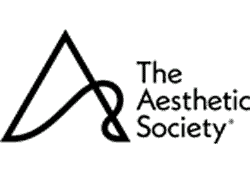
Breast augmentation or “boob job” is a surgical procedure which involves using breast implants or fat transfer injections to increase the size of your current breasts. Breast augmentation is a very individual and important decision for which you need to assess and plan for both your present and future life goals and desires. Dr. Totonchi will help you to determine which surgical incision placement option to choose to achieve your future breast enhancement goal.
There are many reasons why women choose breast enhancement surgery: breast asymmetry, lack of desired fullness or volume, dissatisfaction with the size and/or shape, or simply because your breasts have not fully developed to your satisfaction.
Dr. Totonchi, in Cleveland, Ohio, offers both saline and silicone implants to his patients. Both types of implant have a smooth, round, non textured outer shell made of silicone. We Have not used textured implant for breast augmentation in our practice.
Saline implants are filled with sterile salt water which allows for more surgeon control when it comes to choosing the implant volume. In the event of rupture, the saline solution will leak and the implant will immediately deflate, causing the breast to change shape and size. There is no health risk associated with the body’s absorption of the saline solution; however, surgery will be required to remove the outer shell of the implant at which time a new implant can be exchanged.
Silicone implants come pre-filled with a silicone gel which arrives sealed by the manufacturer. The silicone gel is a viscous material that is reported by many women to look and feel more natural. The silicone gel mimics the look and feel of fat, which breasts are naturally comprised. In the event rupture, the body does not absorb the silicone that has leaked from the implant, instead, the gel becomes trapped in the tissue surrounding the implant. The silicone which has leaked into the surrounding tissue can cause pain or discomfort in addition to possibly changing the shape and/or size of the breast, this is called capsular contracture. Many times the rupture of a silicone implant can go undetected by the patient, which is why MRI scans are used to monitor the condition of silicone implants every 2-3 years after placement. It is recommended that ruptured implants are surgically replaced in order to avoid any further complications.
There are three main types of incisions for breast augmentation which include:
*Trans-axillary incision, which is the most technically advanced method, is often preferred by patients due to the lack of visible scarring surrounding the breast. The trans-axillary incision is made at the crease of the armpit, and can be done endoscopically or by using a traditional open approach. Once the incision is made, a path to the breast is created, and a pocket is made where the implant will be placed. The trans-axillary incision type is further away from the breast which leaves the surface of the external breast tissue surgically untouched. This method is least likely to damage mammary glands, therefore making it desirable for women who may plan to breastfeed in the future. The trans-axillary incision scar typically heals well and often goes unnoticed. The drawback of the trans-axillary incision is that the incision site cannot be used again in the event of future breast surgeries. Finally, due to the location of the incision, there is a possibility for a loss of sensation in the armpit or hand/arm in the rare event that nerves are severed or damaged during the surgical procedure.
*Periareolar incision entails a half circle incision which is made at the lower edge of the areola, which is the darker pigmented area surrounding the nipple. The benefit to this incision type is that the surgeon has more control and precision in the placement and positioning of the breast implant due to the direct access provided by the location of the surgical incision. The risks associated with this technique include a potential loss of breast/nipple sensitivity and the potential of severing milk ducts and nerves, which can impede breastfeeding in the future. Scarring typically fades over time, and is often well hidden due to the difference in skin color and texture at the juncture of areola and breast tissue.
*Inframammary incision is made underneath the fold of the breasts, where the lower portion of the breast meets the chest wall. This incision method is often chosen in order to minimize visible scarring and allows for direct access to the breast tissue and implant insertion site. This incision site can be used for future breast surgeries, which reduces the number of potential scars in the event that future surgeries are required. The inframammary incision type is often chosen because the scar is easily hidden by a bra, bikini, or the breast itself. One potential downside to the inframammary incision is that the scarring location makes it difficult to change breast size in a future breast surgery, due to the fact that the scar would move up in the event that a patient wanted to switch to a larger implant. Conversely, the scar would move down if the patient decided to decrease the size of her implants or remove them altogether.
Patients are generally advised to rest for three to five days following a breast enhancement procedure, which allows the body to recover from anesthesia and for the management of any postoperative pain. During this time, it is normal to experience fatigue and some drowsiness due to pain medication and the effects of anesthesia. Patients are encouraged to begin walking as tolerated immediately following surgery. You will be provided with a post op surgical bra which you will wear for 2-4 weeks after surgery. Some patients experience numbness or hypersensitivity on or around the nipple after surgery, this is normal and should subside in 3-6 months. Patients can generally resume their regular activity 2 weeks after surgery, strength training and weight lifting at four to six weeks post operatively, but this should be done under the discretion of the surgeon and the individual recovery of the patient.
In addition to short-term postoperative care, breast implants require additional long-term care, which begins with regular postoperative breast examinations to evaluate the condition of the implants. While implants can last a lifetime, manufacturers of the implants do not label them to be “lifetime devices” which means that implants can require replacement due to deflation, rupture, or other reasons.
Dr. Totonchi Has never used Breast Implant for augmentation from the series that have been recently recalled, so, if you are a patient of Dr. Totonchi who had breast augmentation in the past, just relax, you do not have to do anything except routine follow ups.
If you are considering breast enhancement surgery, call for a consultation with Dr. Totonchi in Cleveland, Ohio, 440-461-7999.



















